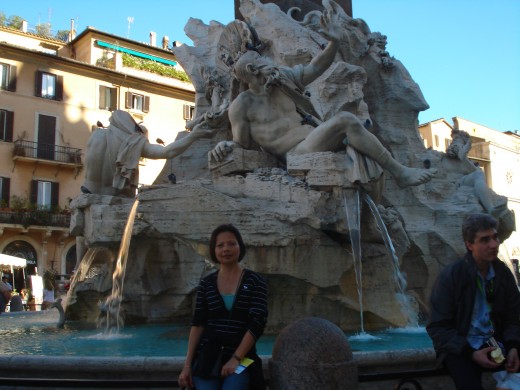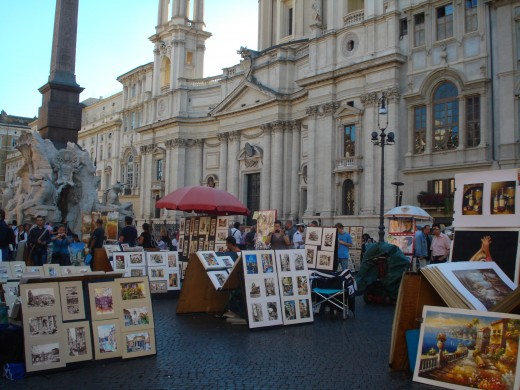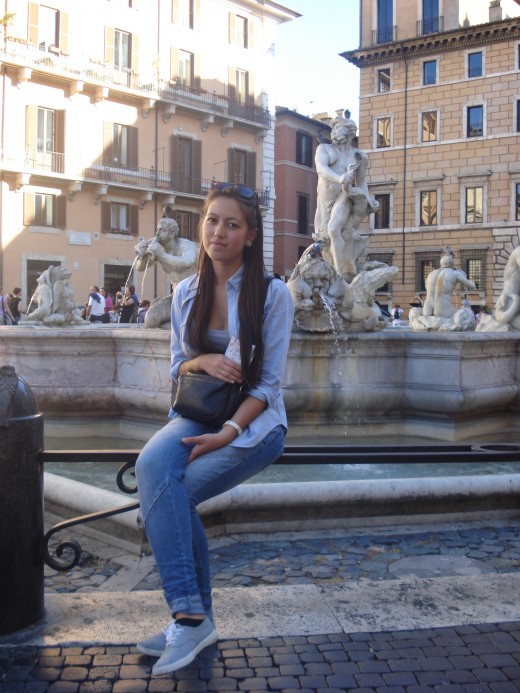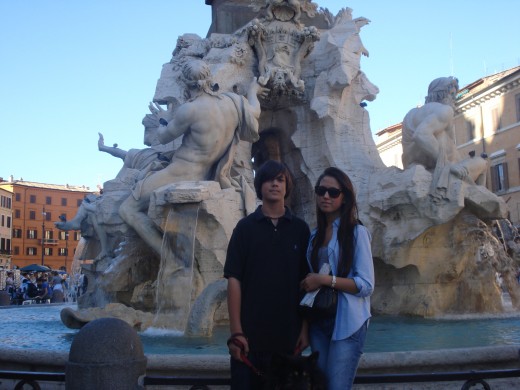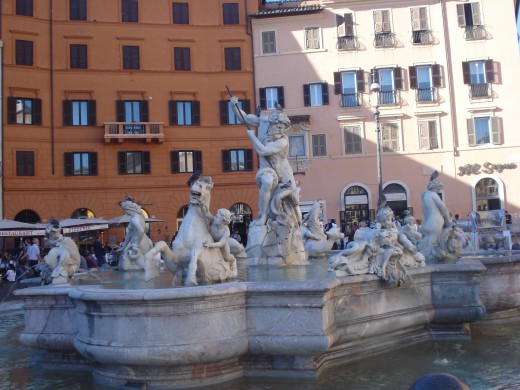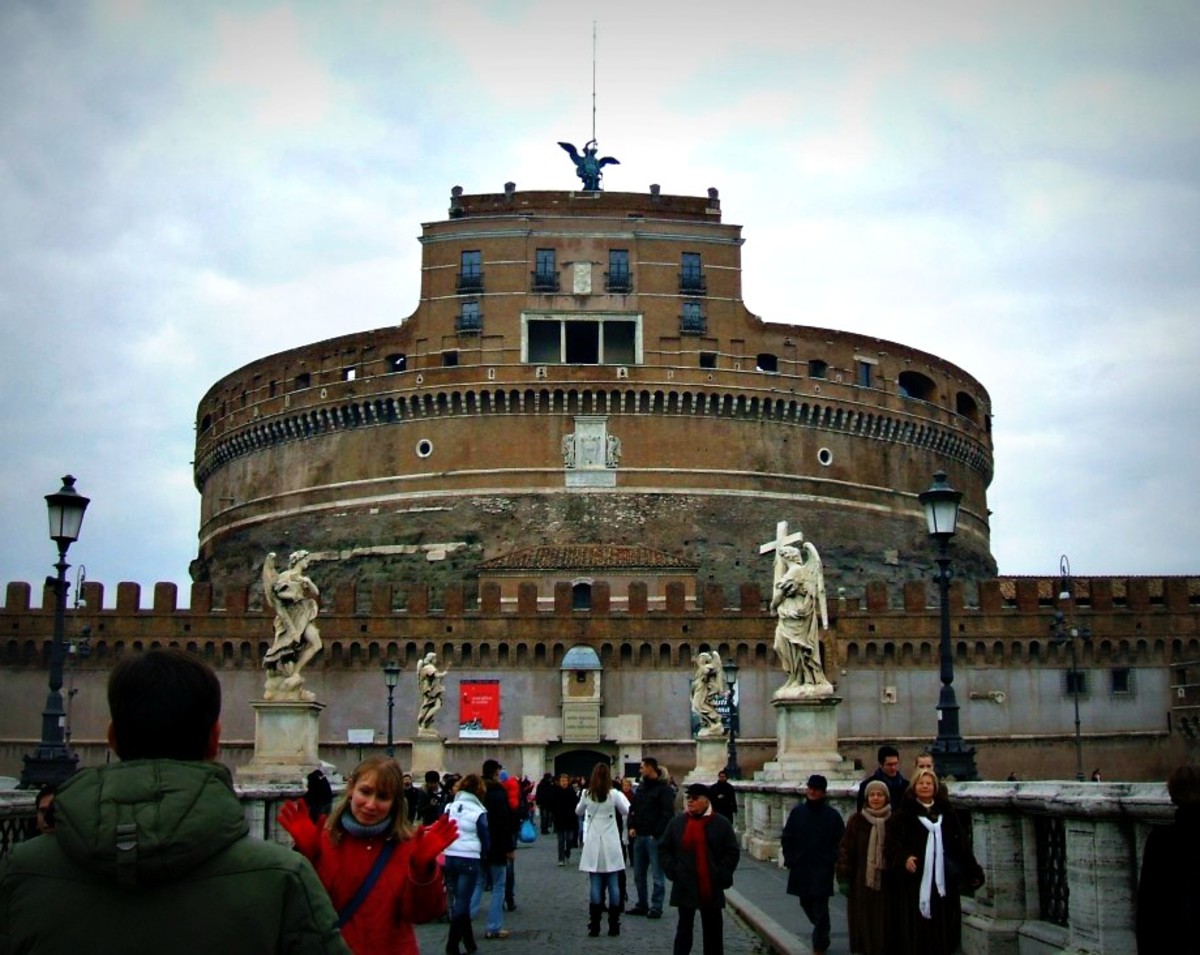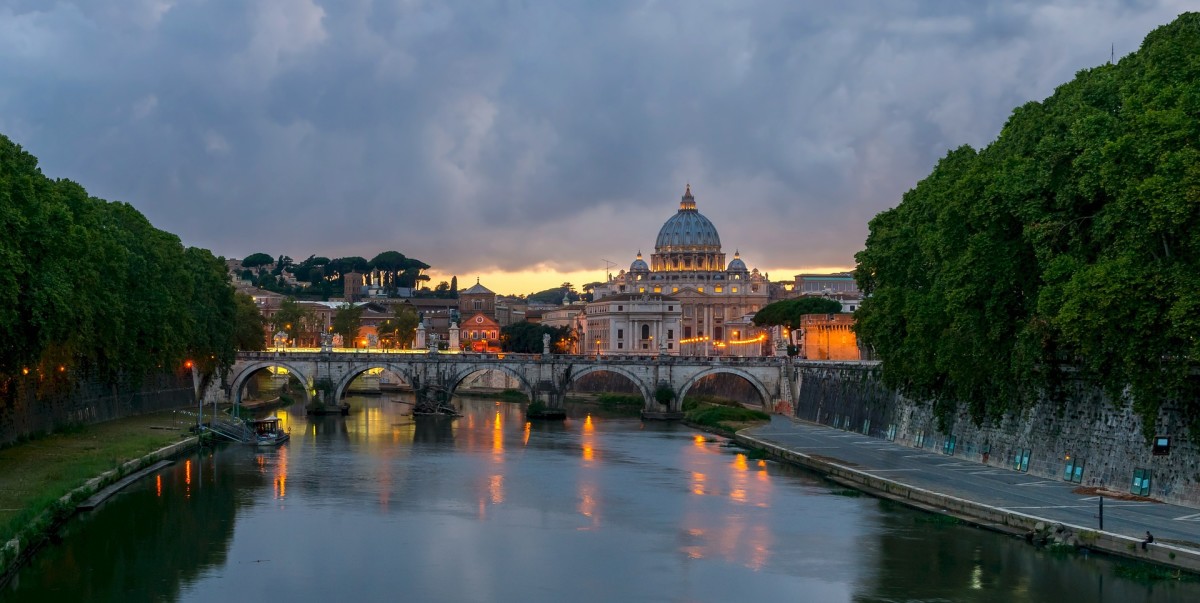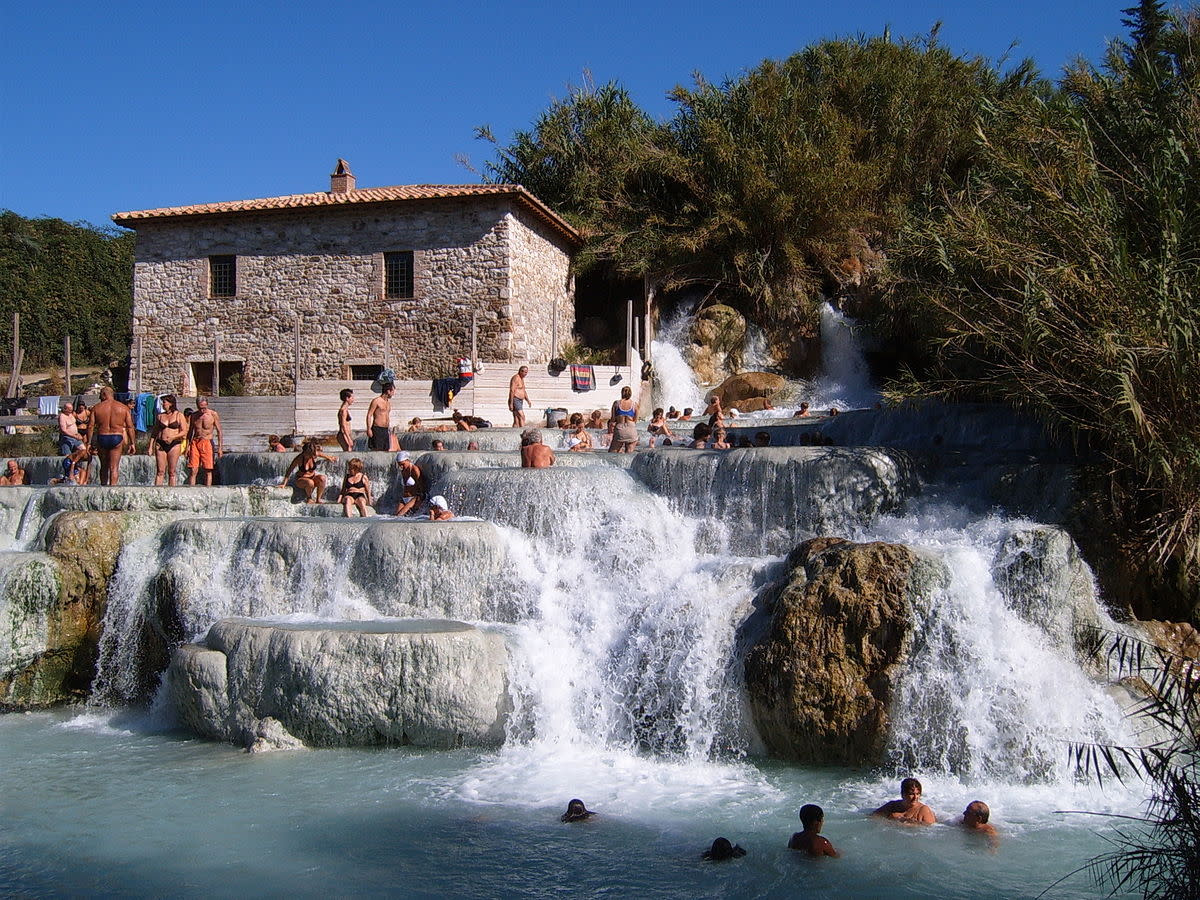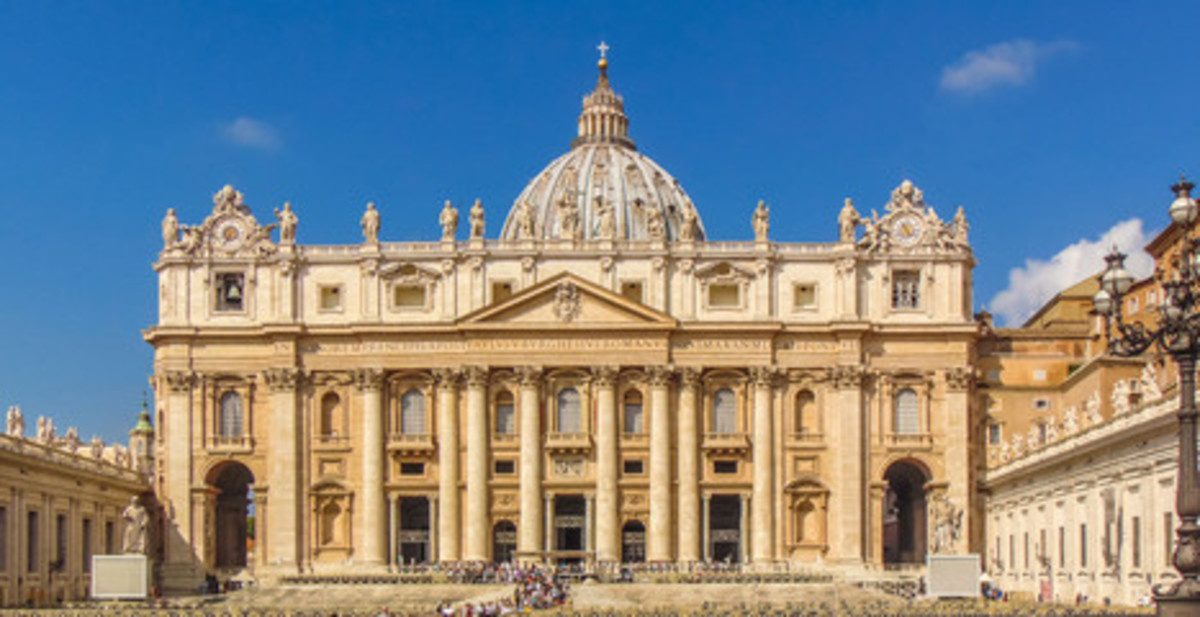Rome - Motorhome Italy Tour Part III - Boun Giorno
Trevi Fountain in Rome
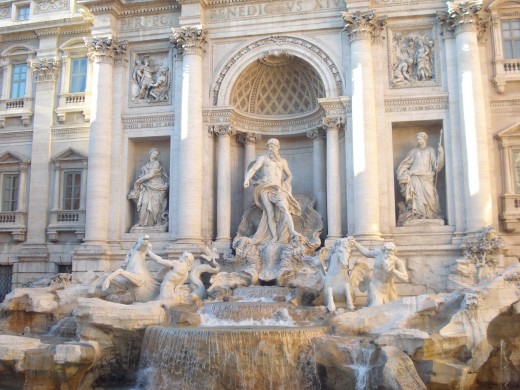
Arriving in Rome
We continued our Italy Camper Tour arriving Rome late in the afternoon, Tuesday.
We stayed in Camping Village Roma for 3 nights. The camp is of the most central location! In just 3 km away from the Vatican, which is easily reached by shuttle bus, the year-round camping Roma is a great base for a holiday full of art and culture. Tip: They also have Campinggrounds in Florence, and in Venice.
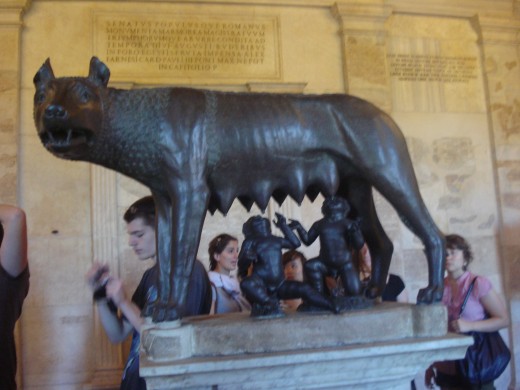
History of Rome
It was a legend that Rome was founded by the twin sons Romulus and Remus who were raised by a she-wolf in 753 B.C.
The Roman civilization shifted from a monarchy to an oligarchic republic to an immense empire during its twelve-century history. After that time it has been more inhabited and had an immense compact on the world as the first headquarters of the Roman Empire and then of the Roman Catholic Church.
Ancient Rome History
mid-8th century BC - Rome was founded, began as an Iron Age hut village.
In 616, the Romans' Etruscan neighbours seized power, were ousted in 509, the inception of the Roman Republic, conquered most of the rest of Italy, then turned its attentions overseas.
1st century BC - Rome ruled Spain, North Africa and Greece.
Colaps of democracy - provided opportunities for power-hungry individuals, and the clashing of egos during the expansion of the Roman Empire
Julius Caesar - ruled Rome as dictator, his nephew Octavian became Rome's first emperor, assuming the title Augustus.
Christ was born - during the reign of Augustus, Christians were persecuted.
4th century, the new religion took hold and Rome became the main centre of Christianity.
Middle Ages - declanation of Rome, though it was the seat of the papacy.
mid-15th century - Rome recovered, and for over 200 years was embellished by the greatest artists of the Renaisance and the Baroque.
1870 - Rome became the capital of the newly unified Italy.
Roman history
History of Rome is usually divided into three main phases:
Before the rise of Rome:
Stone Age (to 3000 BC)
Bronze Age (ca. 3000 BC-1000 BC)
Etruscans (ca. 1000 BC-500 BC)
Roman Republic:
The early period (ca. 500 BC-300 BC)
The Punic Wars (ca. 275 BC-146 BC)
The Civil Wars (ca. 146 BC-30 BC)
Roman Empire:
The Julio-Claudians (30 BC-68 AD)
The Flavians (69 AD-96 AD)
The Five Good Emperors (96 AD-161 AD)
The Severans (161 AD-235 AD)
The Third Century Crisis
Constantine and his family (312 AD-363 AD)
The Theodosians (363 AD-450 AD)
The Fall of Roman Empire (476 AD)
After the fall of Rome:
The Ostrogoths
The Visigoths
The Franks
The Vandals
The Byzantines
The Lombards, the Pope, and Islam
The Vatican in Rome, Italy
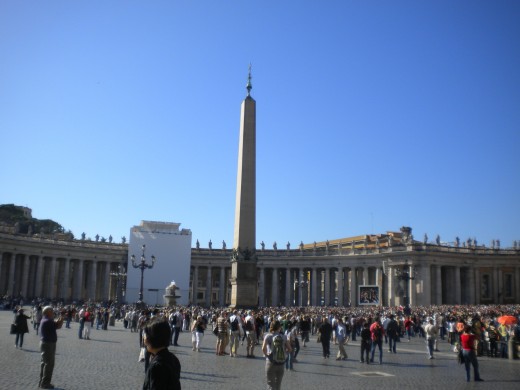
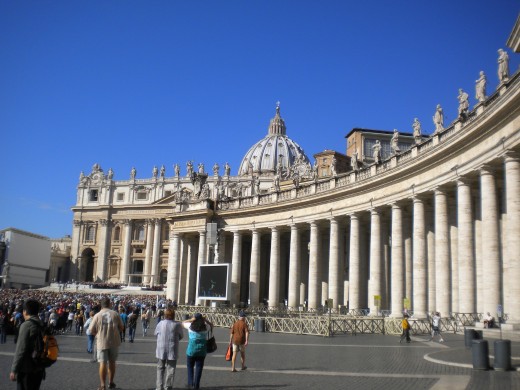
Places to Visit in Rome
Vatican is the smallest state in the world, based in Rome in Italy. Citta del Vaticano, the papal residence, was built over the tomb of Saint Peter. The Vatican's position as a sovereign state within a state was quaranteed by the Lateran Treaty of 1929, marked by the building of a new road, the Via della Conciliazione. This leads from huge St. Peter´s Basilica to Castel Sant´Angelo, a monument to a far grimmer past.
Vatican Museums and Sistine Chapel
The 11 Vatican Museums - the largest and most important collections of cultural and art treasures are in Vatican City. The Musei Vatikani house the papal collections.
The following categories can be viewed in the collection; addition to the Oriental Antiquities (Egypt and Assyria) and classicalantiquity (Greek and especially Roman art) can Etruscan-Italianantiquities, early Christian and medieval art, art of the Renaissance, contemporary works and a ethnographic collectionare on display. A visit to the Vatican Museum is a must for visitors to Rome, but you should plan a little time. The museum consists of 12 complexes, and over 1,300 rooms, for a tour you have to travel seven kilometers.
On the last Sunday of the month of entry into the Vatican museumsis free. Please note that these days are very long waiting periods.
The Sistine Chapel
The most famous of the museums in the Vatican, the SistineChapel. It was inaugurated in 1483. Its fame she has acquiredthrough one of the most famous artists of the Renaissance:Michelangelo, who painted the most famous artwork in the worldon the ceiling of the chapel at over 520 square meters are scenesfrom Genesis to see. In particular, "The Creation of Adam" is afrequently cited and copied section.
Vatican Gardens, an enchanted place, a system of large and small gardens, fountain, fish pool and enclousure for rabbits. They date back to medieval times when vineyards and orchards extended to the north of the Apostolic Palace.
Vatican radio station broadcasts all over the world in 29 languages, it has it's television station, the dialy newspaper, post office with Vatican stamps, shops, offices and publishing house. All signposted, in highly-sophisticated system of organisation.
More than a thousand residents are responsible for the smooth, day-to-day running of this nerve centre of official Christianity, with of course the Pope at its head, all guarded by the Swiss guard.
The Vatican
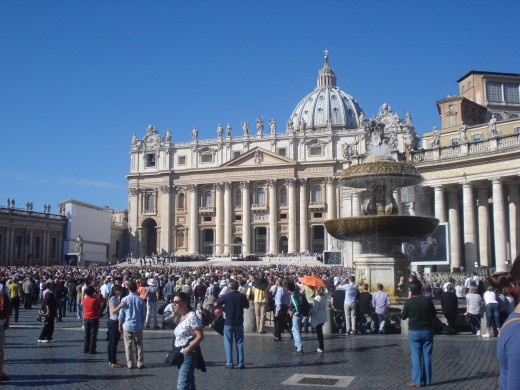
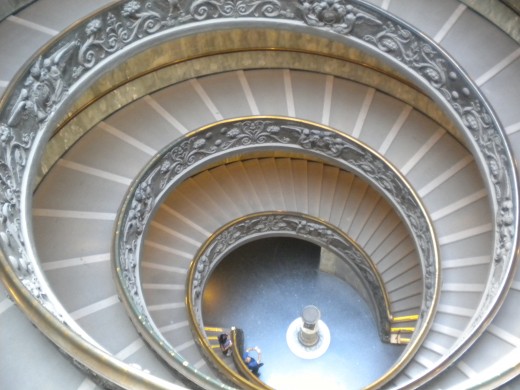
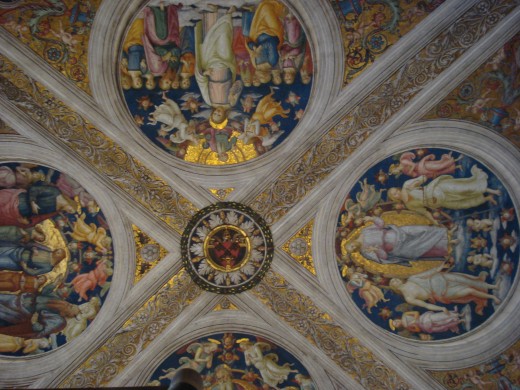
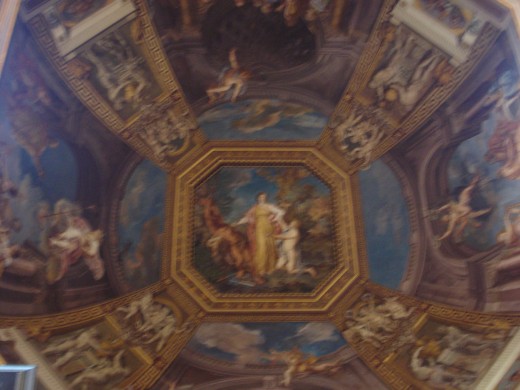
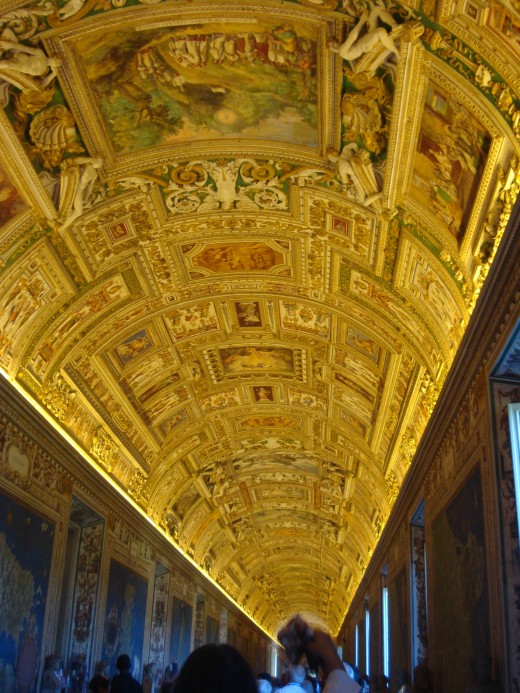
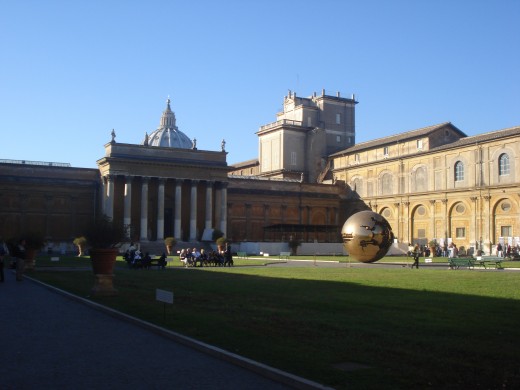
The Trevi Fountain - Most Famous in the World
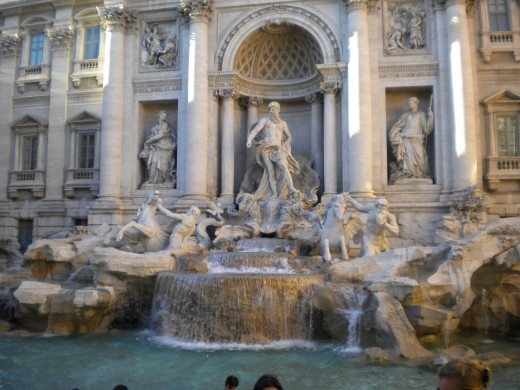
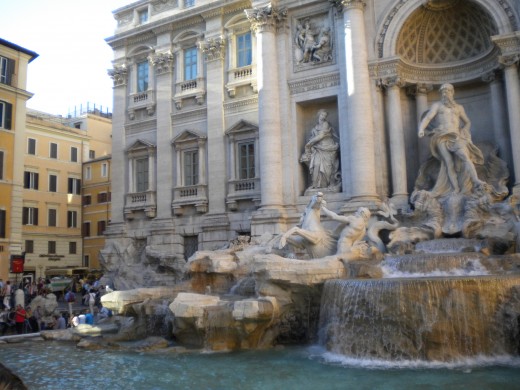
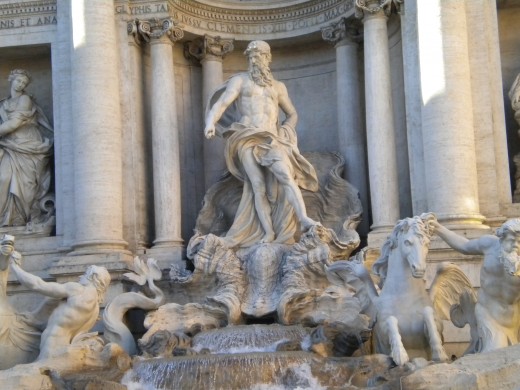
The Fontana di Trevi
The most famous fountain in Rome. Legendary and known from Fellini film "La Dolce Vita" take in the charming Anita Eckberg and the fantastic night of Marcello Mastroianni and a dip in the Trevi Fountain.
The baroque building is at the end of the aqueduct Aqua Vergine which ancient Rome was supplied with water. The Trevi Fountain in the district is following the example of a stage built.
Part of the Fontana di Trevi is integrated into the façade of the palace, Palazzo Poli and has the shape of a triumphal arch. At its center stands a statue of the sea god Neptune.
According to legend, it brings good luck throwing coins over the right shoulder into the Trevi Fountain . If you throw a single coin, you will return to Rome. If you throw two coins, then you will fall in love with an Italian or find love in Rome. If you take at the end of a third coin, one will marry his lover or his love.
The coins that land in the wells are regularly fished out of the pool from the employees of the city of Rome The proceeds will amount to 1.4 million a year (in small coins, of course). The amount is donated to the poor people.
.
Saint Peter's Square
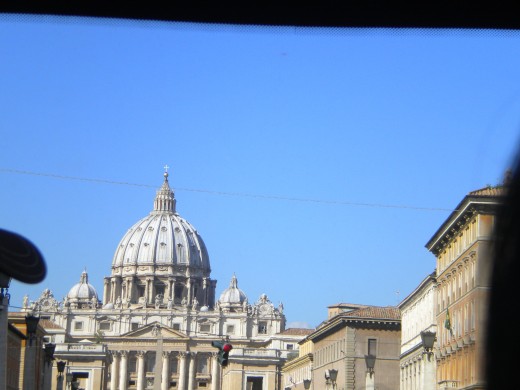
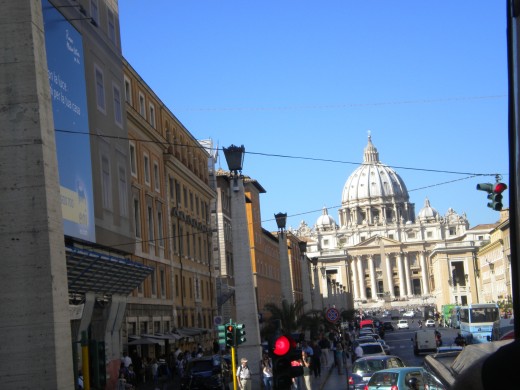
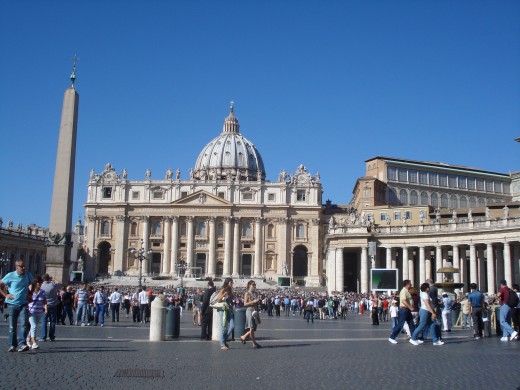
St. Peter's Square (Piazza San Pietro) is part of Vatican City. It was built around 1657 in front of St. Peter's. The place has an elliptical shape and is surrounded by colonnades of Doric columns.The colonnades are to take the faithful in the square in her arms. On the parapet are 140 statues of saints.
In the middle of St. Peter's Square is an obelisk Vatican. The obelisk, which was previously in the Circus of Nero, on the 13thCentury BC. The floor of the place descends toward the center. Thus, a large crowd of people can be viewed overlooking the square.The two fountains in the square were designed by Maderno andBernini.
San Pietro in Vaticano is the burial church of the apostle SimonPeter, and so much more than a cathedral. St. Peter's Basilica in central Rome is the central shrine of the Roman Catholic Church. 60,000 persons can occupy inside the church square. The Pope has here all his mass, even if St. Peter is not the official residence of the Pope.
The dome is the world's largest free-standing brick building, the dome is 537 steps away. It offers an excellent view from the dome on St.Peter's Basilica over the Vatican and Rome. Inside the dome are frieze large letters, a quote from the Gospel of Matthew that says: Tu es Petrus et super hanc petram aedificaboecclesiam meam et tibi dabo claves regni caelorum (You arePeter (Greek: rock), and upon this rock I will build my church And I give you the keys to the kingdom of heaven.)
In the northwestern part of St. Peter's is a statue of St. Peter. His feet are kissed from an old tradition of the pilgrims. Petris is over the grave of the main altar. Extending is a 30-meter-high canopy of bronze, which was designed by Bernini.
Close to the grave of Peter are a crypt of 23graves located are 164 graves of the Vatican Popes grottoes. Around the grave of Peter, which forms the geographical and spiritual center are five National chapels.
The Colosseum im Rome
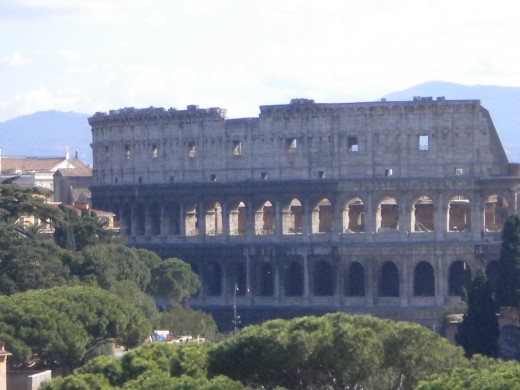
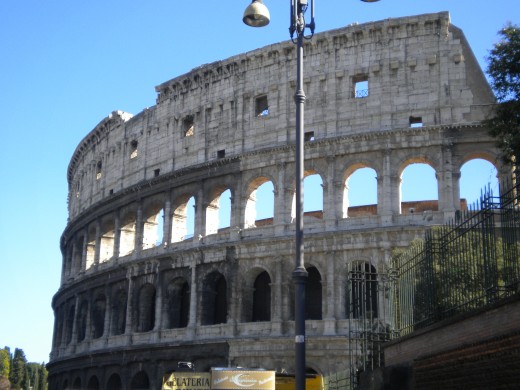
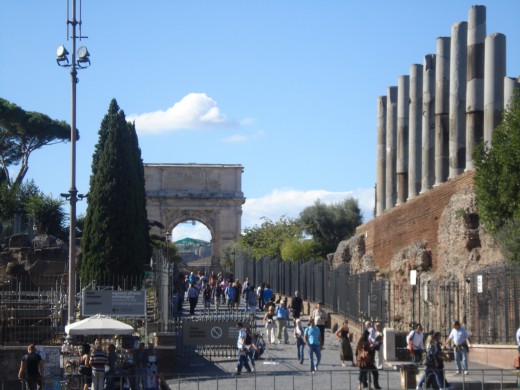
The Colosseum: Colosseo - The Flavian Amphitheater (Colosseum only later renamed) is the largest ancient amphitheater in the world place of bread and circuses and gladiatorial combat. An evidence of Architectural construction and cruel spectacle.
In 72 AD, the construction of the Colosseum in Rome was begun by Vespian. In the 80, it was opened, according to tradition continued with 100 days of games, etc. with gladiator fights, mock naval battles and animal fights.
As a viewer one can reach one of the 80 goals into the interior of the arena. Some inputs and areas of the auditorium were reserved for privileged guests. Inside there was room for 50,000 spectators. Many former principles of design of the arena are still used in the construction of stadiums.
The Colosseum was built on a base elipsenförmigen, a circumference of 527 meters and a height of 48 meters. The circular shape was chosen so gladiators and animals were hunted and have no corner where they could seek shelter.
The floor of the arena was not originally built, after removal of the wooden planks floor covering , it can be flooded that naval battles were recreated in the arena. Later, under the ARENA system of rooms, corridors and utility shafts were built. Here gladiators waited for the death. Complex stage of technology took place here as well.
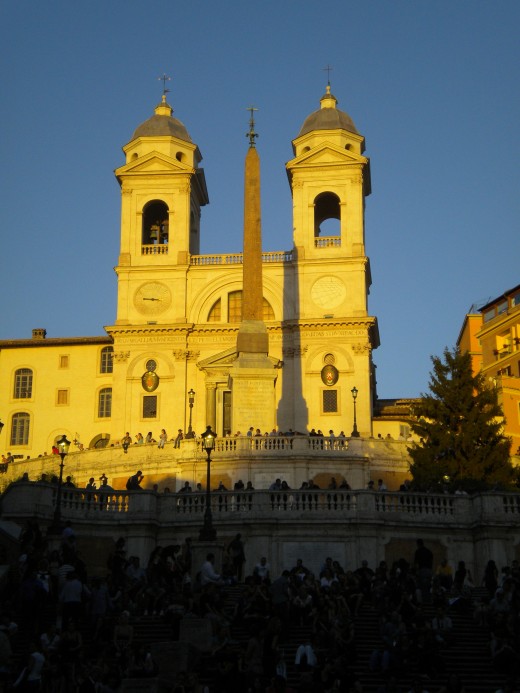
Spanish Steps in Rome - the Scalinata di Trinità dei Monti. Spanische Treppe, the German name is derived from the Piazza di Spagna, which lies at the foot of the stairs.
Between the church Santa Tinita the Monti and Piazza di Spagna at the time of Pope Innocence XIII in the now well-developed urban area, was a wildly overgrown hillside. The pope decreed that a staircase should be built.
In addition to the interests of the Pope, it was also the interest of the French king. After Louis XII had financed the building of the church on the mountain. The staircase was a possible solemn way to the Church. The inscription OPUS AUTEM VARIORERUM INTERVENTU, points the conflict between pope and French king, who wanted to do the stairs to a French monument. The Sun King Louis XIV wanted to complete the staircase with a magnificent equestrian statue of himself, which displeased the Pope.
The Vatican was able to prevail, the staircase was built in the Italian style. Even today, symbols on the stairs refer to the dispute with the French royal family: The staircase is decorated with lilies and eagles, symbols of the French kings and the Pope.
Today, the Spanish Steps, is one of the famous meeting place of tourists and the citizens of Rome. There are always events on the Steps and the Piazza di Spagna.
Roman Forum in Rome, Italy
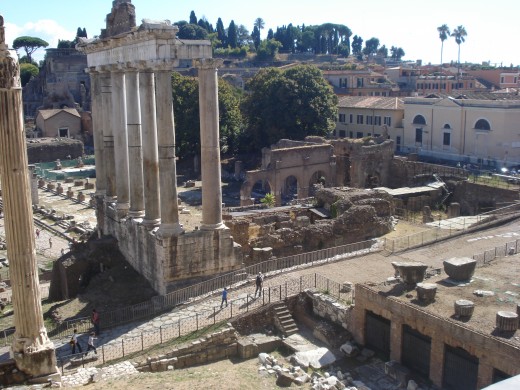
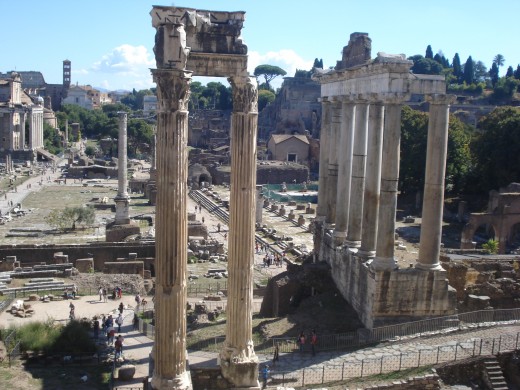
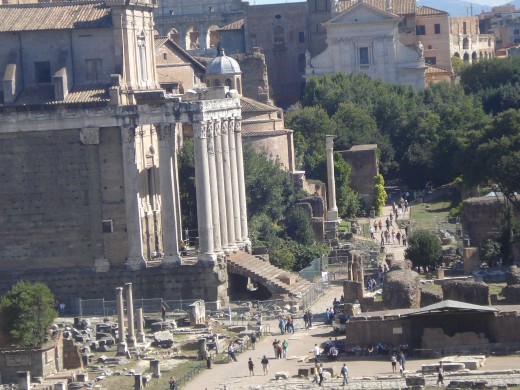
Roman Forum - in ancient Rome was the social, cultural, economic and political center of the city. Almost every Roman town had a forum. The most famous and best preserved is the forum in Rome, which is the center of power of the entire RomanEmpire.
Today only the ruins from the Roman Forum are left. Just like the Colosseum, it was used as a quarry, etc. for the construction of St. Peter's. There are still many traces of the old forum, and the splendor of this place in antiquity can be guessed easily. Some monuments are very well preserved, such as the Arch of Titus, which served as a model for the Parisian Arc de Triomphe.
The buildings of the Forum can be divided into three categories:first, the buildings with religious provision, as the temple. Secondly, the political space within the building. And third, the buildings with a public purpose. There was a clear separation of the use of it but not always.
Ca. 490 BC Christ two temples were built in the valley, which were dedicated to the gods Castor and Saturn. The forum place in these temples quickly became a meeting point and the center of the city.
Under Augustus, the Forum has been revamped. Lots of marble was installed and the place lit up in lavish splendor.
Under the following emperors, the Forum was too small and great religious ceremonies were mainly held here. The political life shifted. It was built so-called imperial forums such as: the Forum of Caesar. These new forums took over some tasks of the Forum, but could never replace it.
.
The Pantheon in Rome
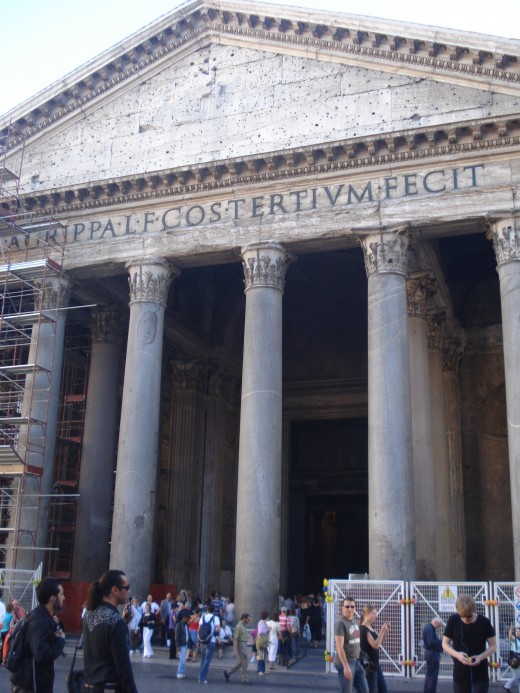
The Pantheon in Rome
The Pantheon was built as a temple to all gods. Hence its name: From the Greek pan (= 'all') and theos (= 'gods') It was built in the Campus Martius around 125 AD,
The dome symbolizes the sky, opening up the sun or theconnection to the stars. The dome has a diameter of about 43 meters. Since the interior is as high as wide, the dome would be designed as a complete ball touching the ground.
From 609th AD, the Pantheon was converted into a church. It is probably due to the fact that the building is one of the best preserved monuments of Roman antiquity, the status as church kept it from being used as a quarry for construction of the popes tobe.
The Pantheon in Rome is one of the oldest concrete buildings in the world. And it has been over the years, the model for domes all over the world, including the Invalides and the Pantheon in Paris, the main building of the University of Virginia, the Capitol in Washington and many more.
.
Castel Sant' Angelo in Rome
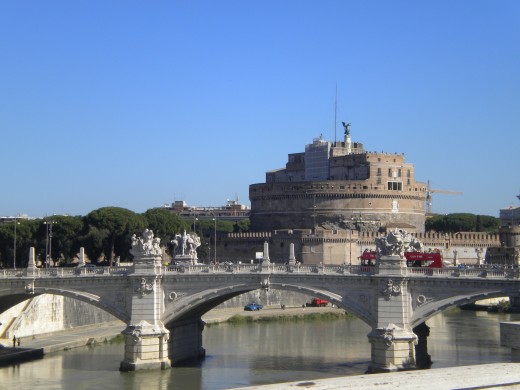
Castel Sant' Angelo
Emperor Hadrian's mausoleum, known as the Castel Sant'Angelo, a tumrartiges cylindrical building in Rome. Originally mausoleum, the building was almost two thousand years in a fortress and castle. It is now a museum.
The building was finished in the year 139. The style dates back to the construction method of the Etruscans. Very rugged construction, the mausoleum was part of the fortifications of the city.
The name "Castel Sant'Angelo" received the Castel 590, then the plague in Rome. Pope Gregory said to have appeared on the mausoleum, the appearance of the Archangel Michael, he announced the end of the disease. The plague disease were actually over now. Today, the statue of the Angels recalled at the top of the building at this difficult time. The marble angels enthroned from 1577-1753 at this location can be visited today in the courtyard. Today's angel statue at the Castel Sant'Angelo is made of bronze.
The Castel Sant'Angelo was tragic fame in the opera in Puccini's"Tosca", the protagonist commits suicide at the Castel Sant'Angelo: She rushes from the building ...
San Pietro in Vincoli, Rome
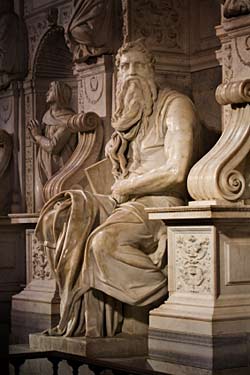
San Pietro in Vincoli - St. Peter in Chains, is the name of the Basilica of St. Peter in Chains translated. Located very near the Coliseum on the Esquiline Hill, home to the Church a great celebrity: the statue of Moses by Michelangelo.
The church was built on the ruins of the 2nd Century, its corner stone was laid in 431st. In the long time since the church was rebuilt several times, most recently in the style of the Renaissance.The conversion took place under Cardinal Giuliano della Rovere, by the way in 1503 for Pope Julius II.
The name of the church dates from the chains in which Peter was chained up to his liberation of Jerusalem as it is called. In addition to Peter this they have worn in the Mamertine prison in Rome.These chains are kept in a glass case beneath the altar of the church.
Famous for the tomb of the Church Juliussen II, is created by Michelangelo. In the tomb, are the statues of Rachel, Leah and Moses. In particular, the Moses statue is an important work of Michelangelo. Moses is portrayed as a return from Mount Sinai with the tablets of the law, he discovered the moment when the Israelites dancing around the golden calf.
Note the movement of the body of the figure, because originally it was to be a corner figures of the tomb and look from a far. The facial expression is frightening, Michelangelo is also seen as a master of presentation of the "awe-inspiring force. "
.
Trajan's Column in Rome
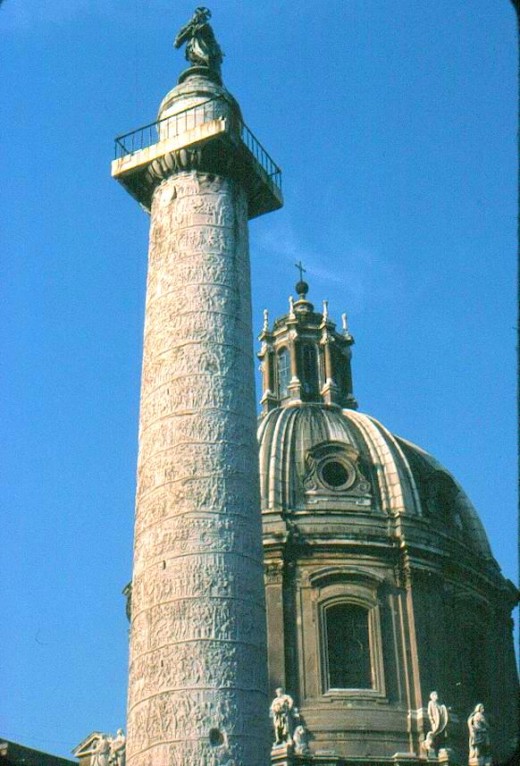
Trajan's Column
Great column, many, many ornaments, statue on top. Trajan's Column is the column of honor for the emperor Trajan. The concept of this column was copied several times over the course of time,eg by Napoleon for the column in the Place Vendome in Paris.
Trajan's Column is well preserved and marked as it were, theForum of Trajan. 113 AD the Roman emperor had built the Victory Column, right between two library wings. Thus, the column was out of the windows, clearly visible when one studies. The column is decorated with a rich and complex spiral ascending Fries. Shown are successful wars and campaigns of Trajan.
Inside the column is a spiral staircase. Through narrow slits a little light shines in the ascent to the platform.
Top of the platform was originally a gold-plated statue of Emperor Trajan. It is no longer obtained, 1587 Pope Sixtus V, put a statue of the apostle Paul on the Column of Trajan. It sits there today.
.
.
Capitol Place: Piazza del Campidoglio in Rome
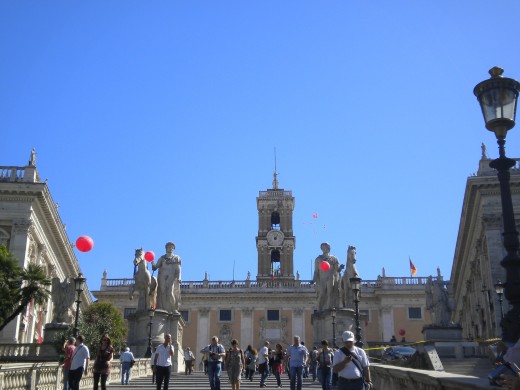
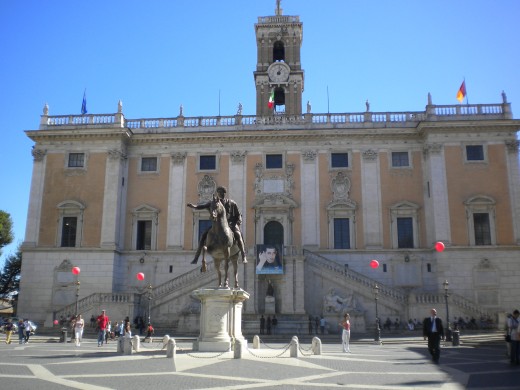
Capitol Place: Piazza del Campidoglio
The central square in the Capitol in Rome since the early modern period, the Piazza del Campidoglio (Capitol Square). It is striking, especially the bronze equestrian statue of Marcus Aurelius. And of course the star-shaped patches on the ground that such rays to equestrian statue back out.
Michelangelo designed the course in the 16 Around for a century for Pope Paul III. The statue was erected in 1538 and now the space around it should be more representative.
This was not always a square. In antiquity, this was a sink. Around the valley around the two hilltops Capitol with the temple of Jupiter and the Arx, next to the temple of JunoMoneta, a castle stands. In the valley onecame from the Roman Forum. In the late Middle Ages the valley was filled.
Monumento Vittorio Emanuele II in Rome
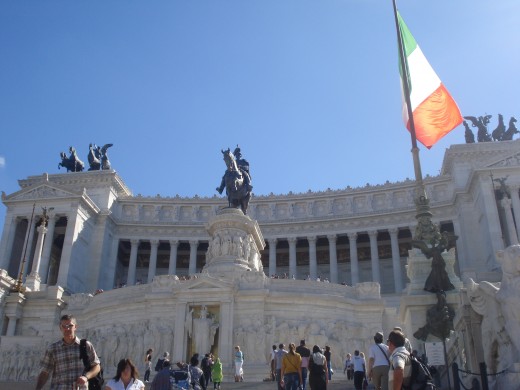
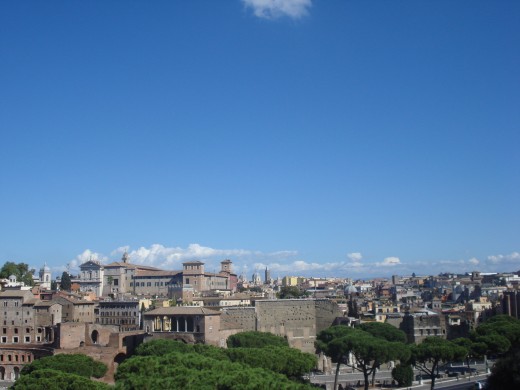
Monumento Vittorio Emanuele II
The very monumental building stands out. Dedicated to the first king of Italy after the newly founded Empire movement in the first half of the 19th Century. Formative large marble staircases, columns, and especially the 12 meters high sculpture of the king.
The monument was erected for Victor Emmanuel II was (MonumentoNazionale a Vittorio Emanuele II, also known as Il Vittoriano) between 1885 and 1927. But it was already inaugurated in 1911th
Although the monument tells of the powerful style of past times and is not necessarily loved by all Romans, from the roof one could admire the wonderful views over Rome.
.
Piazza Navona in Rome
Click thumbnail to view full-size




Piazza Navona
It is one of the most popular places in Rome: Piazza Navona is usually very busy. Whether you eat a snack, and watch the painters or buy a snack from a street vendor. At only a few places you can enjoy the Baroque Rome, as here.
In Piazza Navona you can find three (!) fountain. In the middle of the square stands the Fountain of the Four Rivers (Fontana deiQuattro Fiumoi) that marks the square with its obelisk. The fountain represents four rivers and four continents, namely the Danube for Europe, the Ganges for Asia, the Nile for Africa and the Rio della Plata for America.
The Fontana del Moro is the second showing the fight with a dolphin and the third Fontana del Nettuno is - as the name suggests -dedicated to Neptune.
The Piazza del Popolo in Rome
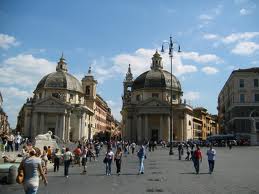
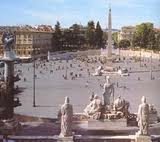
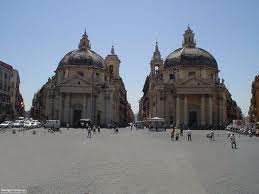
The Piazza del Popolo
Tthe "People's Square" in central Rome.Guests can visit the place is also called "trident" (Trident) called,because seen from the north branch of the court in three long, straight road, the Via del Corso, Via del Babuino and the Via diRipetta.
The Porta del Popolo
Passed through this gate, not only for hundreds of merchants,artists, statesmen in and out of town. Even Martin Luther enteredthrough this gate Rome, when he is just off Piazza del Popolo hadhis quarters.
Right and left of the gate there are small arcades. Also, here's apiece of the old city wall can be visited.
The two churches
On one side of the piazza are faced with two almost identicalchurches. From here, run triangular Via del Corso, Via del Babuinoand the Via di Ripetta in the city center.
The Left of the twin churches of Santa Maria in Monte Santo states,it was built in the 17th Century by Carlo Rainaldi. The right is theSanta Maria dei Miracoli. During construction the builder of the churches had the problem that the left site was much smaller than the right. If to give the twin churches not too unequal, left the churchgot an elliptical dome, and the right a round dome.
The Obelisk
In the center of the square is an obelisk Flaminio, its age isestimated at over 3300 years. The 36.5-meter-high obelisk wasbrought to Rome by Emperor Augustus and first erected in theCircus Maximus.
Santa Maria del Popolo
The real jewel of the square is the small church of Santa Maria delPopolo. Many of the important works by Caravaggio can be visited here.
Rome by Night
More of Italy
© 2011 Carolina

